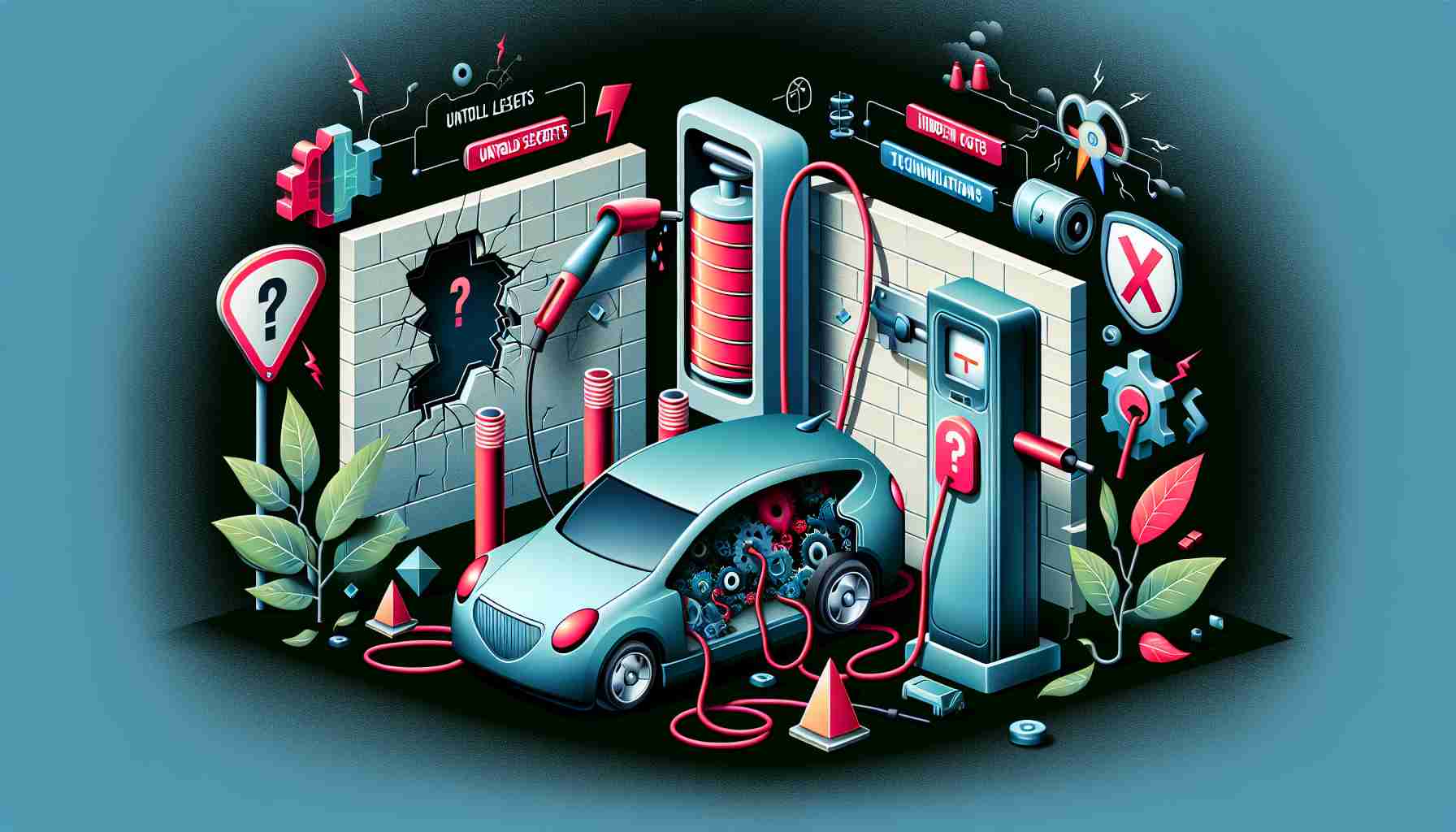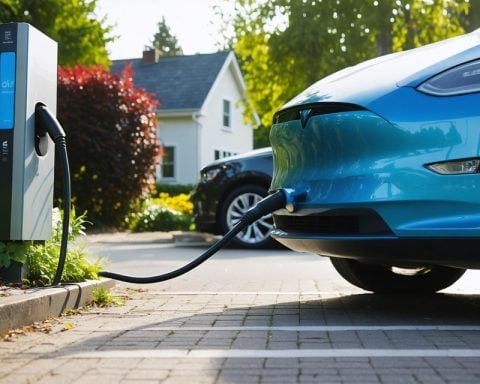Reinventing Success in the EV Universe: Lessons from Canoo’s Demise
The recent Chapter 7 bankruptcy declaration by Canoo, a once-promising startup in the electric vehicle (EV) market, signals more than just the end of a single company’s journey; it underscores a critical gap in how we perceive success in the tech industry. Founded in 2017, Canoo had an ambitious vision to transform urban mobility, boasting a talented team of around 800 employees. However, beneath its innovative facade lay financial woes that ultimately led to its downfall.
Canoo’s troubles can be traced to its reliance on loans as a financial lifeline, without achieving a sustainable revenue stream. This predicament stresses the need for emerging companies to fortify their economic strategies before launching revolutionary products. Despite securing a partnership with a giant like Hyundai, which involved co-developing a flexible electric vehicle platform, these ventures struggled to convert potential into profitability.
The implications of Canoo’s bankruptcy go beyond mere market analysis. It poses a significant question about the startup culture preoccupied with innovation at the expense of financial planning. The buzz around Canoo’s delivery vans had piqued the interest of major entities like the U.S. Postal Service, but fascination alone couldn’t prevent its closure.
This development serves as a cautionary tale for the broader EV industry. In an era of climatic consciousness, the shift towards sustainability should embrace not only environmental but also economic viability. This landscape is evolving, with the promise of mergers and partnerships becoming vital for smaller firms to leverage resources efficiently. The future may well depend on a delicate equilibrium where groundbreaking ideas are supported by a steadfast financial backbone.
The Environmental and Economic Ripple Effect of Canoo’s Bankruptcy in the EV Sector
Canoo’s bankruptcy not only marks the downfall of a promising electric vehicle startup but also serves as a poignant reflection on the intricate interplay between innovation, financial strategy, and environmental aspirations. As the world faces urgent calls for sustainable solutions to combat climate change, the demise of Canoo holds lessons crucial for the EV industry and the broader environmental movement.
From an environmental perspective, the growth of the electric vehicle industry is pivotal in reducing carbon emissions and lessening our reliance on fossil fuels. EVs are touted as a greener alternative, promising to cut down greenhouse gas emissions that are notoriously linked to conventional gasoline and diesel vehicles. With Canoo’s ambitious plans to redefine urban mobility through its innovative vehicle designs, the anticipation was that such innovations would contribute significantly to environmental preservation. However, the company’s financial downfall highlights a critical oversight: the sustainability of a startup’s environmental contributions is intrinsically tied to its economic health.
This predicament has larger implications for humanity and the economy as a whole. The burgeoning EV market is a beacon of hope in the fight against global warming, but Canoo’s fate emphasizes that the path forward is not just about technological breakthroughs or grand visions—it’s equally about establishing a viable economic model that ensures longevity and impact. For humanity, this means that while pushing for rapid progression towards cleaner technologies, there must also be a parallel focus on sustainable business practices to maintain momentum and foster innovation.
On an economic front, the failure of Canoo serves as a stark reminder that innovation without financial viability can lead to significant setbacks. As the world transitions to more sustainable practices, the economic models underpinning these innovations must be robust enough to support growth and adaptability. The EV industry, therefore, finds itself at a crossroads where securing enduring economic partnerships, such as those Canoo attempted with Hyundai, is crucial for smaller firms. This highlights the potential benefits of resource pooling and shared technological advancements for economic resilience.
Looking ahead, the lessons from Canoo’s bankruptcy can guide the future of humanity towards a more harmonious blend of environmental sustainability and economic stability. As more startups venture into sectors critical for combating climate change, there is a growing need for a paradigm shift that values both innovation and financial prudence. The ripple effects of these approaches will likely chart new courses in the quest for sustainable urban transportation solutions, anchoring humanity’s commitment to a future defined by stability and environmental stewardship.
Will More Startups Follow Canoo into Bankruptcy? Unpacking the Realities of the EV Industry
The collapse of Canoo brings into sharp focus the myriad challenges facing companies in the electric vehicle (EV) sector. While electric vehicles are lauded as the future of sustainable transportation, the financial landscape that surrounds them can be exceptionally complex. With Canoo’s Chapter 7 bankruptcy filing exposing significant lessons and potential trends, we delve into what this means for the industry moving forward.
Insights into the EV Industry’s Financial Pitfalls
Canoo’s downfall highlights a critical insight into the EV market: the volatile path to securing a stable financial foundation. While innovation and technological advancements are cornerstones of success, they must be balanced with robust financial strategies. Companies often rely on loans for short-term growth; however, this approach can lead to vulnerabilities if not complemented by sustainable revenue models.
The EV market, predicted to grow substantially in the coming years, demands a detailed analysis of economic strategy as much as technological prowess. To understand the importance of economic sustainability, emerging companies must consider both internal factors—like cash flow and operational efficiency—and external factors, including industry partnerships and market demand.
The Role of Strategic Partnerships
Canoo’s collaboration with Hyundai illustrates the potential of strategic partnerships to bolster innovation. Such alliances are becoming increasingly critical for smaller firms in the burgeoning EV space. By leveraging the strengths of established companies, newcomers can gain access to invaluable resources, industry expertise, and a larger market presence.
Understanding the dynamics of successful partnerships could aid startups in navigating the competitive EV landscape. The integration of technology, shared research, and mutual financial goals can constitute a synergistic relationship that promotes longevity and resilience in the market.
The Sustainability Equation
The current emphasis on sustainability extends beyond environmental concerns to encompass financial and operational dimensions. The fate of Canoo urges companies to seek sustainable growth by aligning groundbreaking technologies with solid business models. The market is shifting towards strategies that harmonize ecological objectives with commercial viability.
The Future of the EV Industry: Trends and Predictions
The EV industry’s trajectory is shaped by its inherent ability to adapt to rapid technological changes while stabilizing financially. The sector’s future may see increased consolidation, where smaller startups merge or are acquired by larger entities. This trend could bring about a more streamlined industry, capable of withstanding economic turbulence and regulatory pressures.
Additionally, advancements in battery technology, government stimulus packages conducive to EV adoption, and the evolving consumer preference for cleaner energy solutions are set to power the industry’s growth. Companies that innovate within these parameters, while maintaining a solid economic footing, are likely to lead the charge in the EV revolution.
Conclusion
Canoo’s bankruptcy serves as a compelling reminder of the intricacies involved in the EV market. As the industry continues to evolve, the balance between innovation and financial prudence will be paramount. For further insights on the evolving trends within this dynamic sector, visit Hyundai Global for related partnerships and developments in the automotive industry.













